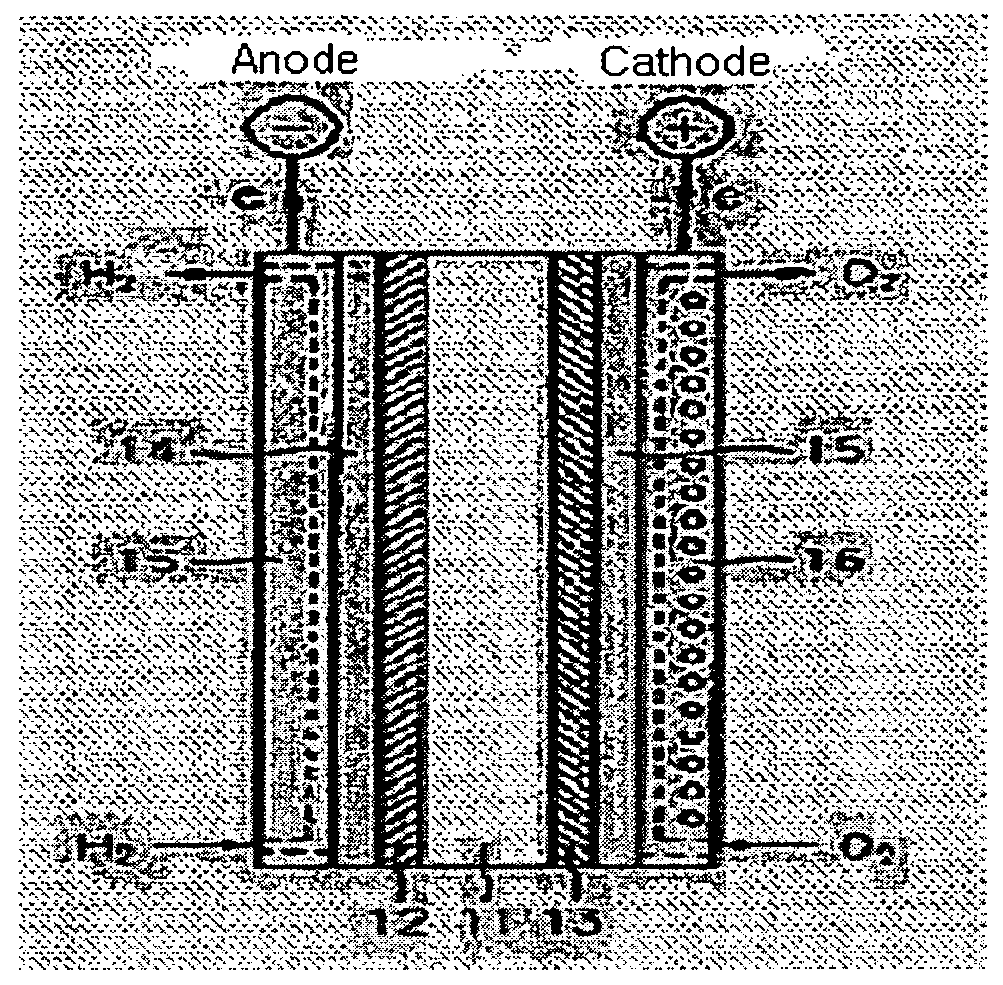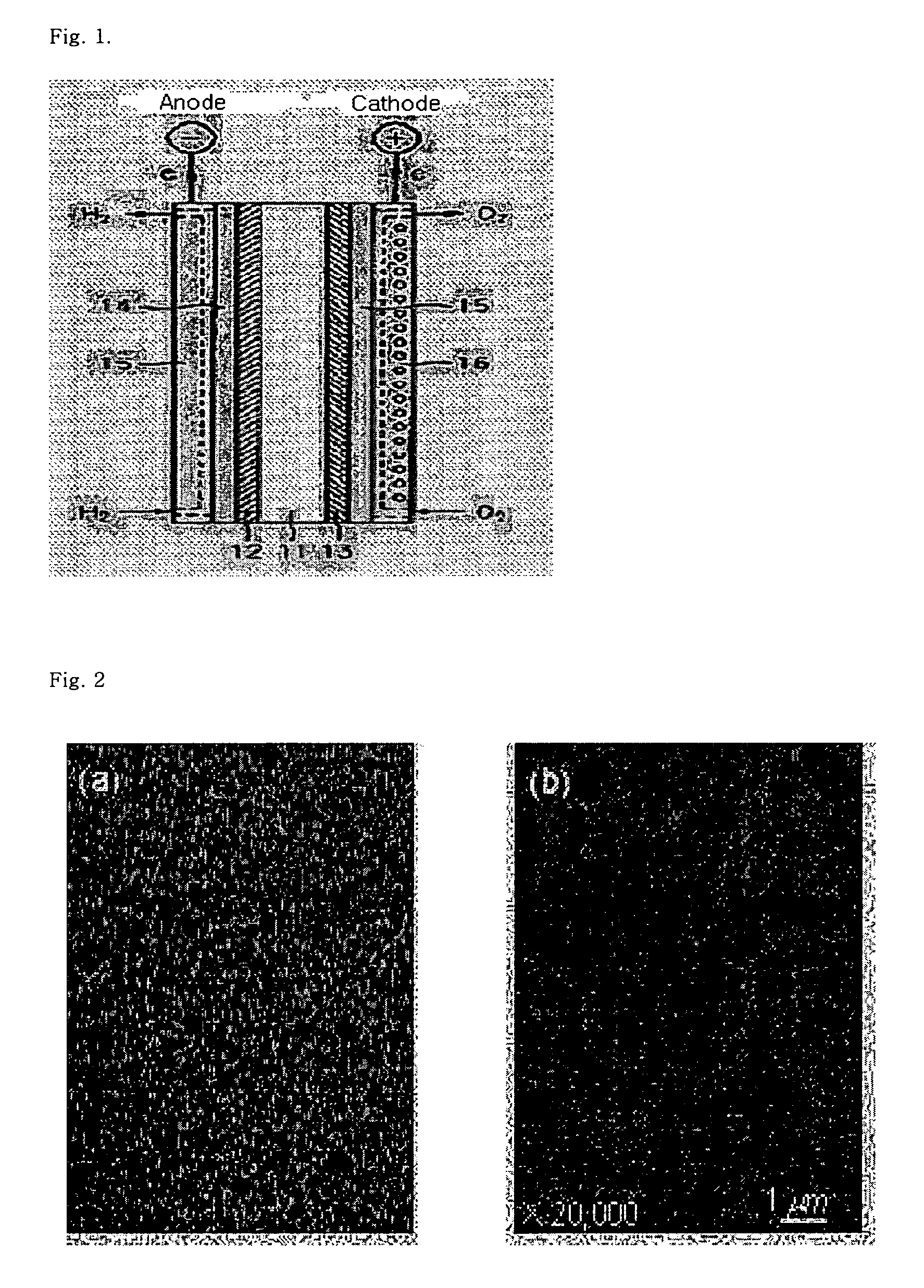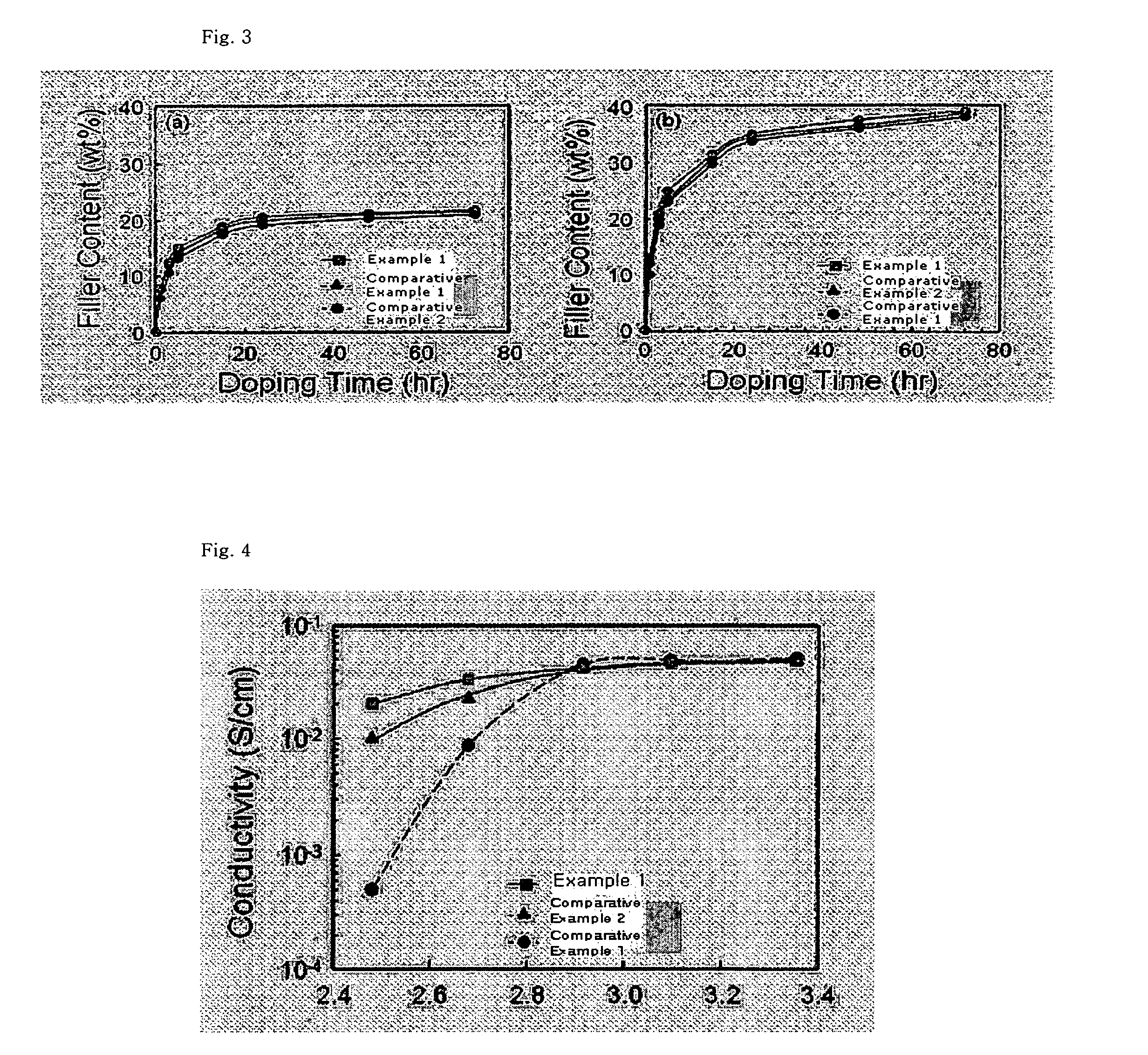Composite ion-exchange membrane, fabrication method of the same, and membrane-electrode assembly, and polymer electrolyte fuel cell having the same
a technology of electrolyte fuel cell and composite ion exchange membrane, which is applied in the direction of cell components, final product manufacturing, sustainable manufacturing/processing, etc., can solve the problems of dimensional stability, mechanical properties and resolution ability of reaction materials that are concurrently decreased, and the tear strength becomes relatively low, so as to achieve low ohmic loss, high current density, and high electrochemical stability
- Summary
- Abstract
- Description
- Claims
- Application Information
AI Technical Summary
Benefits of technology
Problems solved by technology
Method used
Image
Examples
example 1
Fabrication of Composite Ion-exchange Membrane
[0074]Nafion™ / H2O / 2-propanol(solution technology Inc. EW=1.100) solution of 5 wt % is agitated for 48 hours at a room temperature, and solvent is evaporated to thereby produce about 5 g (grams) of Nafion™ gel, and 95 g of dimethylaceteamide (DMA) is added, so that Nafion™ / DMA solution of about 5 wt % is provided.
[0075]This solution is preheated for 24 hours in water at 60° C. to thereby evaporate remaining moisture. Dibutylphthalate (DBP) of 2 g is added to Nafion™ / DMA solution 100 and is mixed by exposure to ultrasonic waves of 5 to 20 KHz. The thusly fabricated mixed solution is coated on a glass plate and is heated in an oven at 100° C. to thereby fabricate a polymer membrane having a thickness of about 50 μm.
[0076]The polymer membrane is admixed in a solution of methanol / diethylether (1:1 vol %) for 24 hours, and solvent is exchanged to thereby remove the DBP component and form nano-sized pores. Thereafter, the polymer membrane is ri...
experiment example
[0081]The proton conductivity of a high nanofiltration composite membrane and composite electrolye membrane fabricated based on the examples 1 and comparative examples 1 and 2 above are measured by current interruption method.
[0082]Specifically, alternating current is applied to both ends of a test piece having a size of 1×5 cm and a thickness of 30˜50 μm. The alternating current (AC) is applied in a chamber with controlled temperature and moisture, and a difference of AC is measured at a center of the test piece to thereby obtain proton conductivity measurements.
[0083]In addition, the mechanical property of the fabricated composite polymer electrolyte membrane is evaluated based on ASTM-638 or ASTM-882. The test machine parameters for this evaluation is as follows.
[0084]
Cross head speed: 25 cm / mingrip distance: 6.35 cmTemperature: 25° C.Humidity: 50%
[0085]FIG. 3 illustrates the amount of solid proton conductor charged in the membrane fabricated in the example 1 and Comparative Exam...
example 2
Fabrications of Membrane-electrode Assembly and Fuel Cell
[0090]A commercially available catalyst electrode layer is coated on both sides of the composite polymer nanofiltration membrane and composite electrolyte membrane fabricated in example 1 and comparative examples 1 and 2 above based on a hot-pressing method to thereby fabricate a membrane-electrode assembly (MEA).
[0091]Nafion™ / 2-propanol solution of 1 wt % is sprayed to both sides of the composite polymer nanofiltration membrane for achieving a smooth junction with electrode before the hot-pressing is performed and is dried at a room temperature to thereby form a Nafion™ layer of about 2 μm.
[0092]The electrode used for fabricating MEA is ELAT electrode having a single surface fabricated by E-TEK Inc. The support is a plane weave carbon cloth with a thickness of about 0.36 mm, the final thickness of the catalyst layer is about 0.45 mm, and the amount of the catalyst metal is about 0.4 mg / cm2. Pt-ru / C alloy catalyst is used for ...
PUM
| Property | Measurement | Unit |
|---|---|---|
| diameter | aaaaa | aaaaa |
| thickness | aaaaa | aaaaa |
| thickness | aaaaa | aaaaa |
Abstract
Description
Claims
Application Information
 Login to View More
Login to View More - R&D
- Intellectual Property
- Life Sciences
- Materials
- Tech Scout
- Unparalleled Data Quality
- Higher Quality Content
- 60% Fewer Hallucinations
Browse by: Latest US Patents, China's latest patents, Technical Efficacy Thesaurus, Application Domain, Technology Topic, Popular Technical Reports.
© 2025 PatSnap. All rights reserved.Legal|Privacy policy|Modern Slavery Act Transparency Statement|Sitemap|About US| Contact US: help@patsnap.com



